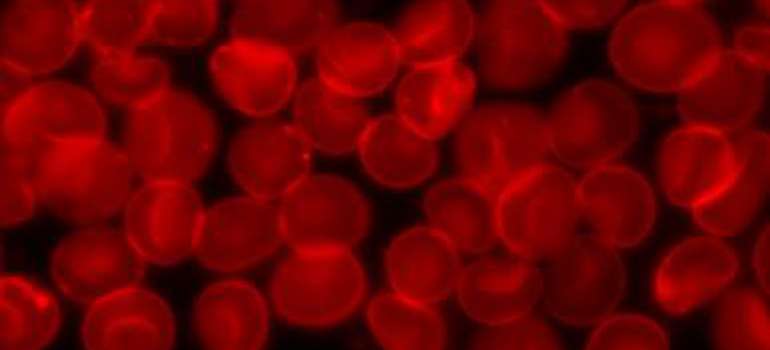This article has been reviewed according to Science X's editorial process and policies. Editors have highlighted the following attributes while ensuring the content's credibility:
fact-checked
peer-reviewed publication
trusted source
proofread
Team develops bioengineered material to rapidly stop bleeding in patients on blood thinners

More than 11 million people in the United States take anticoagulation or antiplatelet medications, such as heparin or aspirin, to treat serious conditions like heart attack and stroke. However, these medications also put patients at risk of life-threatening bleeding in the case of injury or during surgery.
To improve strategies for reducing blood loss, a team led by investigators from Brigham and Women's Hospital has developed a porous material that maximizes blood absorption and effectively activates clotting mechanisms, even in patients on anticoagulation or antiplatelet medication.
The findings, published in PNAS, show that the bleed-stopping material, or "hemostat," halted bleeding within an average of about five minutes in patients on anticoagulants who underwent cardiac catheterization, a dramatic reduction from traditional compression methods that can take over two hours.
"This is a next-generation hemostat that effectively stops bleeding, even in patients who take anticoagulation or antiplatelet medications," said corresponding author Hae Lin Jang, Ph.D., of the Center for Engineered Therapeutics. "We used an exciting, interdisciplinary approach that combines engineering principles, materials science, and understandings of molecular biology to overcome the limitations of existing therapies and address a real clinical need."
Over 5 million people globally die each year due to trauma, with over a third of these deaths attributed to uncontrolled bleeding. The researchers used what is known as a "rational engineering" approach to develop a more effective hemostat. They began by simulating blood flow through pores to determine what microscopic design would optimize absorption. They drew inspiration from the architecture of the human lungs, which contain spherical "air sacs" called alveoli that enable a high interaction rate with blood within a short time.
Alveoli have a large surface area based on their tortuous porous structure, which led the researchers to engineer a highly interconnected, spherical microporous structure in their material to rapidly absorb blood and accumulate clotting components like platelets in a highly concentrated manner, which facilitate blood clotting.
The researchers developed the alveoli-like structure using chitosan, which can be extracted from shellfish. Chitosan is already used in some hemostats; its positively charged surface is known to strongly attract negatively charged platelets and fibrinogen, the two major components of a blood clot. However, contrary to previous assumptions, the researchers discovered that chitosan also directly stimulates blood clotting by activating the TLR-2 clotting pathway, making it a viable mechanism for increasing blood clotting even in patients on anticoagulants.
The researchers demonstrated the efficacy of the material in 70 patients who underwent cardiovascular catheterization procedures while on the anticoagulant heparin, with bleeding observed to stop after a mean time of about five minutes for patients on low-dose heparin and in under about nine minutes in patients on heparin doses of up to 12,500 IU.
Other advantages of the hemostatic material included its easy application and removal. The chitosan pad eliminated the need for strong and prolonged compression, which can take several hours and requires extensive nursing. Furthermore, gauze removal can cause severe pain to patients and is frequently associated with a reoccurrence of bleeding; in contrast, the more absorptive chitosan hemostat was removed relatively cleanly from wounds and received high patient comfort scores.
The researchers are continuing to study the wound-healing process after application of the chitosan hemostat. Moreover, they are investigating other next-generation wound dressings, which may be able to deliver drugs or improve the cleanliness of the wound environment, thus reducing the need for frequent changes.
"This hemostat can save valuable time in emergency situations," said first author Vivian K. Lee, Ph.D., of the Center for Engineered Therapeutics. "In emergencies, it can be extremely challenging to screen the prescription information of a patient to provide appropriate anticoagulation reversal therapy to patients on anticoagulants. If a hemostat can bypass a medication's anticoagulating mechanisms, it can be used in a wide range of patients, saving time, and potentially saving lives."
Co-authors of the study include Taewoo Lee (BWH), Amrit Ghosh (BWH), Tanmoy Saha (BWH), Manish V. Bais (BWH), Kala Kumar Bharani, Milan Chag, Keyur Parikh, Parloop Bhatt, Bumseok Namgung (BWH), Geethapriya Venkataramanan (BWH), Animesh Agrawal, Kiran Sonaje, Leo Mavely, Shiladitya Sengupta (BWH), and Raghunath Anant Mashelkar.
More information: Vivian K. Lee et al, An architecturally rational hemostat for rapid stopping of massive bleeding on anticoagulation therapy, Proceedings of the National Academy of Sciences (2024). DOI: 10.1073/pnas.2316170121



















